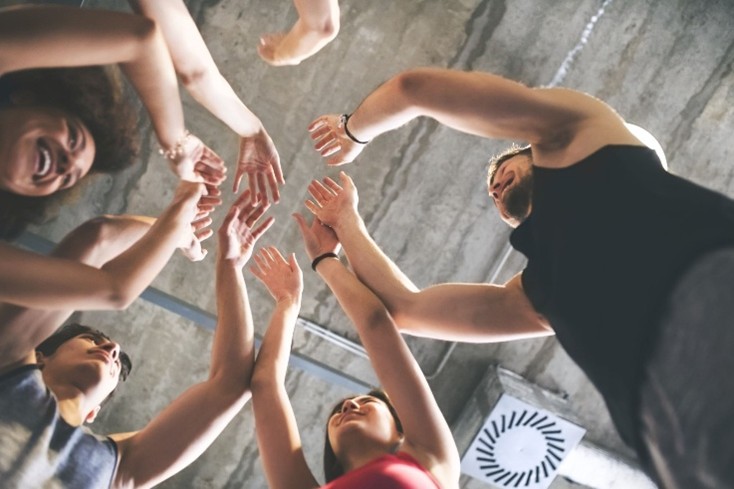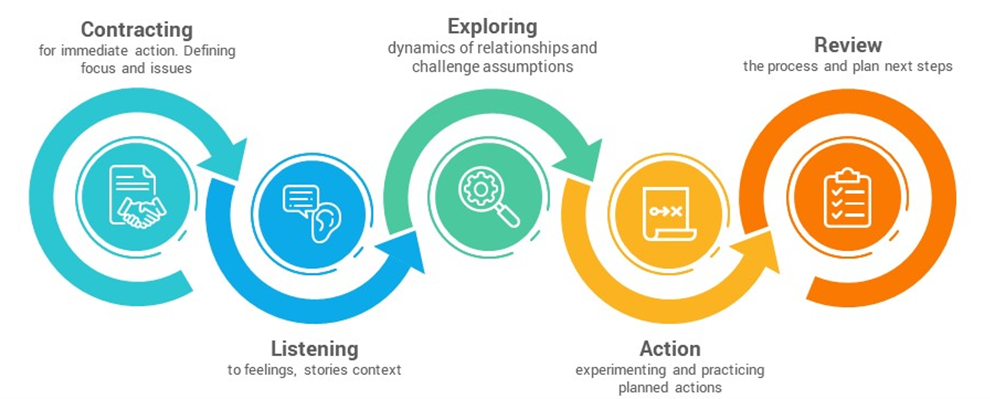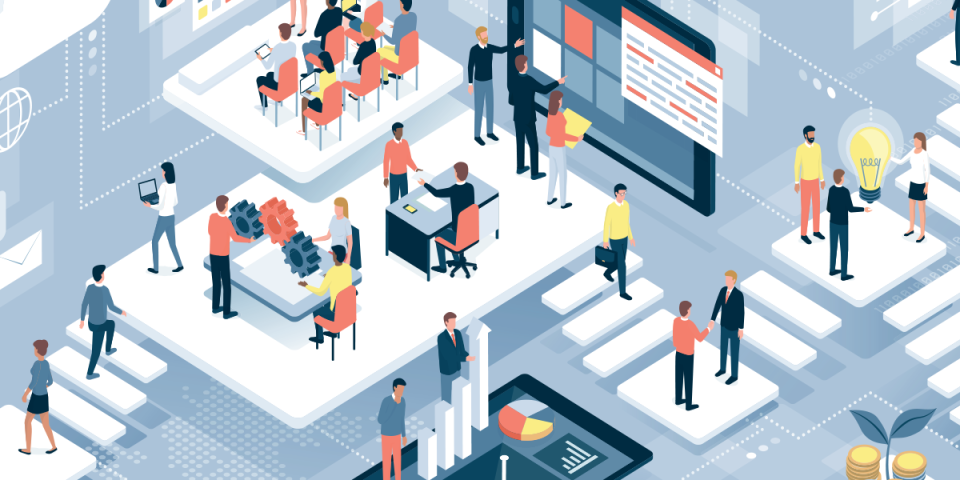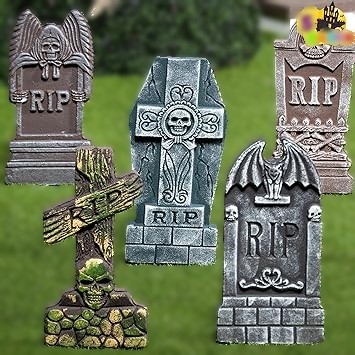2020 Mid-Year Review Summary
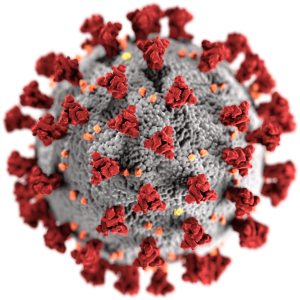 For the first time in twenty years, I am issuing a 2020 Mid-Year Review. So much has happened in just the first six months, that it feels like a year has passed since my last report in December 2019. Indeed, for too many, a lifetime has passed since then.
For the first time in twenty years, I am issuing a 2020 Mid-Year Review. So much has happened in just the first six months, that it feels like a year has passed since my last report in December 2019. Indeed, for too many, a lifetime has passed since then.
In any given year, witnessing the U.S. President being impeached, the global spread of the COVID Pandemic, the ensuing meltdown of the global economy or the rise of mass protests against racist police violence – any one of these stories would be banner headline news. Instead, we’ve had all four cataclysmic events in just the span of six months. I used to think that 1968 – with its assassinations, war, riots and Nixon’s election – was the single worst year of my existence, but 2020 is the new undisputed champion of everything that is evil about the human condition.
In this 2020 Mid-Year Review, I will focus exclusively on the two cataclysms: COVID-19 and Black Lives Matter.
2020 Mid-Year Review: COVID-19 Pandemic Plague
I was teaching a seminar in San Diego in early March when I learned that Rudy Golbert, center for the Utah Jazz, had tested positive for COVID-19 shortly after mocking the disease in front of reporters. Though I didn’t fully realize that all the dominoes were about to fall, the fact that the NBA immediately cancelled all remaining games, including ones about to begin that evening, sent a strong signal that life was about to change for everyone. The next day, I finished the seminar while maintaining social distance as best as I could in a room packed with 25 other people and drove back to LA that evening. That turns out to have been the last live seminar I would deliver in 2020 and perhaps even beyond, depending on when we find a cure.
Soon after, our governor declared a state-wide shutdown and from then on, we have sheltered at home, only venturing out for essentials like groceries and household supplies. The economy ground to a sudden halt, like someone had pulled the emergency brake on the free enterprise system. Retail and travel businesses have been devastated, financial markets have plunged only to regain some of the losses with massive input from the Federal Reserve and most businesses are still operating at minimal levels. The numbers for this 2020 Mid-Year Review are stunning. GDP plunged 5 percent in the first quarter and is likely to decline another 30% in the second quarter. Official unemployment reached 14% with the real number of people out of work closer to 25%. In tourist-heavy locales like Las Vegas, unemployment shot up to over 50%.
2020 Mid-Year Review: America’s Dismal Response
This devastating collapse was a direct consequence of America’s inability to respond quickly to a growing contagion that spread faster than our public health system could track and isolate. When you cannot test, isolate and trace sources of a contagious infection, the only alternative is to shut down everything and have people isolate at home, a brute force instrument of public policy that has left people shuttered for the past three months and led to the worst economic crisis since the Great Depression of the 1930s.
While versions of this crisis have played out across the globe, from China to Europe to America and now to the southern hemisphere, the U.S. response has been uniquely incompetent. No other country has as many cases and deaths as the U.S. Indeed, we lead the world with nearly half of all confirmed cases and deaths. How did it get so bad in the richest nation on earth?
Crisis exposes the weaknesses lurking in our social system. For America, those weaknesses include: a health system geared to private profiteering, not public service, an economy that works best for the wealthy and a Federal government led by a President with no public service experience and antipathy to government of, by and for the people. When the pandemic hit our shores, brought by people returning from China and Italy, our President’s initial response was to downplay the threat and claim it would go away by summer, like the flu. When that didn’t happen, he then turned to a series of wild crackpot theories he picked up on the Internet, including the bizarre suggestion that ingesting poisonous disinfectants could cure the sick. He also pushed unproven remedies like hydroxychloroquine, wasting millions of dollars and weeks of valuable time on a quack remedy. Then, he lost interest in fighting the epidemic and now pretends it doesn’t exist, living in his own alternative reality. That has forced the 50 states to figure out their own strategy to fight the epidemic, leading to 50 different sets of rules. No wonder the public is disgusted with such ineptitude.
Our local public health experts bravely tried to set the record straight and take aggressive action to stem the growing tide of infection, but we quickly learned that our public health system is anemic, a victim of repeated budget cuts over the decades that left it unable to respond to a nationwide pandemic. Asian countries with robust public health systems like Singapore and Japan were able to mobilize an army of health workers to monitor and trace the infection’s spread, thus putting a halt to it before it ran rampant throughout their societies. They made COVID testing quick and ubiquitous, thus getting control of the spread through quarantining and contact tracing. In the U.S., we’ve made testing slow and scarce, forcing people to wait in line for hours to get a test, when they can find a site nearby, and then days and weeks to get a result. Despite the President’s boast that anyone who wants a test can get one, we have tested only 12 percent of our population to date.
Compounding matters, our Federal government refused to adopt the World Health Organization’s proven COVID-19 test, instead opting to allow American biotech companies to come up with their own tests and price gouge taxpayers. This cost us valuable time and resulted in a proliferation of over 100 incompatible tests, each requiring their own proprietary collection and analysis protocols. To make matters worse, our Food and Drug Administration didn’t even bother to certify these incompatible tests, instead letting private companies “self-certify” that their tests worked as advertised. This has resulted in dozens of tests with error rates approaching 50%. In other words, they get every other test result wrong. This renders them worse than useless, since a false negative gives someone the misguided assurance that they are COVID-free, when in fact they are not.
Instead of universal testing with kits that have been certified as accurate, we have forced essential workers to show up at their jobs with no testing, and in many cases, no access to basic personal protection like masks and protective clothing. The President even ordered meatpacking workers back on the job inside slaughterhouses where the virus was rampant, thus condemning them to the Hobbesian choice of slow starvation if they refused to work or a quicker death if they showed up to work right next to someone with COVID. As the death toll mounts, we don’t even bother to mourn the dead. They are just another grim statistic reported in a news Chiron, unless one of them happens to be a family member.
Another weakness that COVID exposed is the way we house and treat the elderly in nursing homes, veterans homes and other residences for seniors across the country. These places turned into death camps when the virus was introduced, usually by a staff member, and then spread unchecked like an out of control wildfire due to a lack of testing and basic health practices like infection control and quarantine. The public learned in horror that these private institutions had no requirement to track and report the spread of the virus and in some states, that local public health authorities didn’t even have the right to investigate and take action when outbreaks occurred in these privately-run institutions.
COVID got real for me when I learned that my own mother had contracted it at her nursing home in upstate New York. She was most likely infected by an employee who brought the virus into the facility from outside. An elderly gentleman was the first to come down with it and staff quickly spread it from him to dozens of other residents, including my Mom. We learned of this only days later when a nurse at the home finally called my sister and informed her that our mother had tested positive. Afterwards, we tried to learn more about the outbreak, but management refused to share any information, even basics like the number of people infected. They chose to stonewall families, hiding the truth from them and the public in a despicable act of self-preservation. My sister was shocked to learn that local county health officials had no control whatsoever over the private nursing home market in New York state. She had to go to the local media to shame the owners of the nursing home into informing the public about the extent of the outbreak. Fortunately, my mother is one of those who showed no symptoms and recovered without harm, but seven other residents were not so lucky, losing their lives.
2020 Mid-Year Review: The COVIDiots
This pandemic is far from over, with the worst still to come this fall, when seasonal flu kicks in. Yet a small number of Americans clamor loudly to ignore the science and return to life before COVID. In the City of Torrance where I live, over 50 people have lost their battle with COVID and yet some people continue to clamor for a total reopening and flout health rules designed to keep everyone safe. I see them out and about town, flagrantly refusing to mask up or practice social distancing. At a recent city council meeting, held virtually due to the pandemic, angry speakers called in to denounce stay at home orders, masks, social distancing and any other health advice offered by experts. Instead, they claim the whole COVID thing is a hoax and that shutting down the country is really just a liberal attempt to defeat Trump in November.
These calls to ignore science and the law are presented as exercises in liberty, but they are rooted in acts of selfishness. Those protesting are only thinking about themselves and their own privileged sense of personal freedom. They never think about how their ‘free’ behavior impacts the lives and freedom of others. While COVIDiots are certainly free to play Russian Roulette with their own lives, their freedom stops at my lungs. They don’t have the right to infect others and cause them to potentially develop symptoms and die. Deliberately exposing yourself to a deadly virus is suicide; deliberately exposing others to a deadly virus is murder. Why is this so difficult to understand?
2020 Mid-Year Review: Black Lives Matter
The other major news event of 2020 so far has been the massive protests in reaction to the police killing of George Floyd. Though the Black Lives Matter movement has been active for years, drawing attention to police mistreatment of African-Americans, something in the American psyche snapped at the video of a white police officer with his knee on the neck of Floyd for over 8 minutes, until he lost consciousness and then died on the pavement where he had been pinned by three white Minneapolis police officers. The smug nonchalance of the officers, as if they were stopping for coffee and donuts, and the total helplessness of Mr. Floyd, already in handcuffs, pleading for his life, set off a chain reaction that shocked the world. For once, the police decision to execute a black man in front of witnesses, including a teenage girl who had the presence of mind to record the event on her phone, elicited a strong reaction from the public.
Many pundits have speculated why this killing in particular was the proverbial final straw. Other police killings have been captured on video, yet did not prompt such widespread outrage. As experts report, every one of these killings is unique, despite the depressing pattern of racial profiling and escalated violence. In this case, the total lack of resistance by Mr. Floyd and his helplessness as he lay dying, pleading for his life with his hands handcuffed behind his back and three police officers on top of him, left no room for doubt about the police’s intentions. In other cases, suspects have resisted or tried to escape, thus providing a fig leaf of credibility to the police accounts, but in Floyd’s case, not even a fig leaf could conceal their murderous intent. It was so obvious that the four officers have been charged, something that rarely happens to police. Of course, the real test of our justice system will the trial and whether 12 citizens will find the officers guilty. Too many times, the police walk free, always given the benefit of the doubt.
I believe the pandemic is another reason this time was different. People were already living under tremendous stress due to the lockdown and meltdown of the economy. Over 30 million Americans have lost their jobs, sitting at home with nothing to do but binge watch soap operas and overeat. We have listened to our Federal leaders mislead us for months about the threat while they did little to prevent or contain it. Our society devolved into dry tinder and all it took was a spark to ignite the blaze. Floyd’s killing provided that spark.
Another reason this time was different is the growing racial animus fueled by Trump’s open courting of white supremacists, whose campaign to turn the clock back to a segregated America is the beating heart of his MAGA crusade. For three and half years, progressives have watched overt racism make a comeback, threatening to dismantle 50 years of civil rights progress, hard fought gains that previous generations gave their lives for. Young people who have grown up in the so-called post-racial America of the 21st century have led the effort to protect the gains we have made and to push for even greater equality in our justice system. They have taken to the streets by the tens of thousands, using people power to make their point to a political system that increasingly ignores the will of the people, serving only the interests of the rich.
2020 Mid-Year Review: The Roots of BLM
We find ourselves at a critical moment of reckoning, but its roots run deep. From the beginning of our history, America has had to deal with the original sin of slavery, the stain upon our democratic ideals, the hypocrisy that undergirded our existence for over 300 years. It’s enshrined in our constitution, where slaves were declared 3/5ths of a person and their votes given to their white masters to cast for them. When Jefferson said in our Declaration of Independence that “all men are created equal and endowed by the creator with inalienable rights,” he was literally just talking about white men. Women had no such rights, considered at the time the property of their husbands. Blacks had no such rights either. Slaves were not considered human, but mere chattel. Even those living free in the North did not receive the right to vote until after the Civil War. Women waited another 60 years before they were allowed to vote and to this day, still do not have equal protection under the law. Other ethnic groups, including Mexicans and Asians, suffered discrimination as well. Our treatment of Native Americans is another terrible stain on our history, one of the worst genocides in human history. Over 9 million Native Americans were wiped out in North America from 1600 to 1900. Indeed, it is not an exaggeration to say that the American South was built with slave labor on stolen land. Until we honestly confront our past, we will not be able to reconcile our differences and work together for a better future.
2020 Mid-Year Review: How Institutional Racism Works
This history led America to become a white supremacist nation. By the 1950s, for all practical purposes, segregation had expanded from the Confederate South to the Canadian border. When I was growing up at that time in the town of Gates, a suburb of Rochester, N.Y., I lived in an all-white town just a few miles from the black and Puerto Rican neighborhoods of the inner city. I learned that my town, like most other suburban areas, had laws on the books that forbade selling or renting housing to blacks. It was euphemistically called “redlining” in the real estate industry and it kept my neighborhood lily white. The only exception was a light-skinned black family who managed to buy a house a couple blocks from mine by “passing” as white. I became friends with their two children, who were around my age, before I knew of their background. To us neighborhood kids, they were just two other kids on the block, but some parents, upon learning that the family was partially black, forbid their children from playing with the “colored” children. Though my parents never forbade me, it was my first encounter with overt racism.
It would certainly not be the last. In 1964, Rochester became one of the first cities in the country to experience what would become known as the inner city “race riots” of the sixties. It started in July of that year when the police showed up to disband a black block party, using excessive force to arrest people. When attendees fought back, throwing objects at the police, a full scale civil disturbance broke out that lasted three days and nights. By the time it ended, four people were dead, a thousand more were in jail and over 200 stores were looted and burned. The response in my white suburban town was abject panic, fueled by racism. Rumors abounded of marauding gangs of black rioters coming for “whitey.” My parents kept my sister and I indoors, even though we were miles from the unrest and at no risk whatsoever. The black gangs never materialized, but the damage was done. Being a child, the fear my parents expressed was transferred to me. I also became wary of blacks. It would take me years to fully overcome that visceral fear of unknown black and brown people. I think that is how racism is taught in America. It’s not so much the distorted history and lack of diversity in our educational system as it is the lessons that our parents teach us about other people, the stereotypes that perpetuate fear and loathing.
I saw this expressed again during the last year I lived in Rochester. I was a high school senior by then, and had become an activist in Democratic politics, especially the doomed 1968 campaign of Eugene McCarthy, who ran on a platform of ending the Vietnam War. The following year, our town was considering allowing the first public housing project to be built in the wake of the Civil Rights Act of 1964, which forbid racial discrimination in housing. I attended a public hearing on the matter at city hall, planning to join a few other members of the local Democratic Party club in speaking out in favor of the project, which was widely understood to be designed to rent to low income families, including blacks and Puerto Ricans. The reaction from the white crowd at this hearing still sticks in my mind, over 50 years later. I heard one speaker after another get up and denounce the proposal in the most graphic and disgusting display of racism that I had ever personally witnessed up to that time. For a moment, I thought I was in Alabama listening to George Wallace proclaim segregation forever. When it came time for me to speak, I hesitated, knowing I was up against a mob. Nevertheless, I rose nervously and stood in front of the crowd like Daniel in the lion’s den, urging the city to follow the recent civil rights law and do the right thing morally. I even naively quoted Thomas Jefferson’s Declaration of Independence. I thought I had made a reasoned argument, but the response was jeers and catcalls from the racist crowd. It got so bad, the Mayor ordered me to sit down and stop speaking. Afterwards, I had one group of men who were older than my father follow me to the parking lot and threaten to beat me up if I ever spoke up for the N**** again. Later, I found out from a classmate whose dad was on the local police force that the Mayor ordered them to put a tail on me, labeling me an outside agitator in my own hometown. The City voted down the project. It would take another decade before the good white people of Gates would allow blacks to live there.
2020 Mid-Year Review: Learning Anti-racism
Shortly thereafter, I moved to California, where I have lived ever since. Los Angeles was a world away from Rochester, a place of incredible diversity even back then. But I soon found out that LA was just as racist, although in a more subtle way than the rubes who shouted overt racial insults at me in my hometown. Back then, LA was one of the most segregated cities in the country, its vast geography tending to isolate communities from each other. I lived in Westwood, since I attended UCLA, where I found myself thrust into the midst of the wealthiest, whitest area of the city, with Bel Air and Brentwood as neighbors. I learned a lot about the Westside and Venice Beach in my first year, but knew nothing of the rest of the city.
That changed one day during my sophomore year when I met a local black guy from Compton in my American history class. He was one of only a tiny handful of black students in a sea of white and yellow and he impressed me with his willingness to challenge our elderly white professor on a number of points, including the role of slavery in the founding of our country. While our professor was smart enough to dispense with the high school fairy tale that our founding fathers were universally committed to liberty and justice for all, he preached the prevailing gospel of American history that our founders were visionary men who chose the best features of western civilization to craft the ultimate democracy. This black guy stood up and pointed out that half the signatories to the Declaration of Independence were slaveholders and the other half wanted to free the slaves and send them back to Africa. The number who believed that blacks should enjoy equal rights in America? Exactly zero.
I caught up with this guy after class and thanked him for setting the record straight. His name was Jonathan C. Williams, or JC to his friends. He had been drafted into the Army, served in Vietnam and was going to college on the GI Bill. From that day, we forged a friendship that lasted 20 years. Being 10 years older than me, he became an early mentor who literally changed my life. We had a political connection from the start. He was in the Black Panthers and I was in SDS – Students for a Democratic Society. We soon discovered other mutual interests and gradually our friendship grew. At first, I noticed that he treated me and other white students with a certain caution and distance, not sure who he could trust. When he finally invited me home to his granddad’s house in Compton, I saw the real JC. He had lived a hardscrabble life that I could not even imagine. His father had been a rolling stone and his mother was a drug addict. While they were in and out of prison, his grandparents raised him. By the time I met him, only his granddad had survived, a man well into his eighties who had fought in the big one – WWII — and still displayed his military insignia with pride. Among the many things JC and his granddad taught me was an appreciation for jazz and the proud black history that jazz represented as the soundtrack of the 20th century. To this day, it is my favorite music.
While hanging with JC, I saw firsthand what LAPD racial profiling looked like. One night, he was driving when flashing red lights behind us compelled him to pull over to the curb. Two white officers emerged from their black and white and demanded our IDs in a gruff, aggressive tone. When I inquired why we were being stopped, The officer on my side shouted, “shut up” and then ran our IDs. Next, they ordered both of us out of the car and popped the trunk. When JC questioned why, the officer next to him drew his weapon and pointed it at JC. I was petrified, thinking this could be the end of my young life. One officer proceeded to search the vehicle and reaching under the passenger seat, produced a small aluminum foil package which he proclaimed to be drugs, specifically PCP. Neither JC nor I had any drugs in our possession and never touched PCP anyway, so we knew it was a plant. We both got hauled off to jail and had to hire legal counsel to fight the bogus charge, which was ultimately dropped due to illegal search. Turns out the cops claimed to have stopped us for a burned-out taillight, but JC was able to prove that it was working just fine. Thousands of dollars poorer, I learned then just how precarious life was for struggling black men living for the city and for white men who chose them as friends.
My friendship with JC opened my eyes to African-American culture, especially as lived in South Central LA. I saw and experienced neighborhoods of the vast Southland that I would never have visited on my own. I became more open-minded about cultural differences and less judgmental about others’ behavior. This openness led me to discover other cultures prevalent in LA, especially Mexican and Asian. I became an urban anthropologist, exploring the myriad cultures tucked into the tiny neighborhoods near the freeway offramps. Eventually, my interest led me to learn Spanish and Mandarin and to live in China for two years, where I met my ex-wife. We have two sons who represent the merger of East and West. I’m sure that none of that would have happened if I hadn’t first stepped outside my white suburban upbringing. JC had a lot to do with helping me step out.
2020 Mid-Year Review: The Way Forward
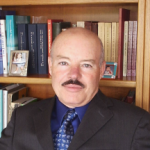
Donald J. Ford, Ph.D., Training and Human Resource Consultant
In closing, for this 2020 Mid-Year Review: Over the years, I have expanded my network of friendships to include people from all over the world. I’ve been privileged to travel to 31 countries on five continents and experience the whole wide world of human culture. However, I still consider myself a recovering racist. Like COVID, racism doesn’t have a surefire cure. Instead, it’s a constant battle against the human tendency to overgeneralize and stereotype others instead of taking the time and effort to understand them as fellow human beings. I think racism will only end when we all see each other as truly equal human beings, global citizens with certain inalienable rights, including life, liberty and the pursuit of happiness. After two and half centuries, we are still trying to live up to the true meaning of our creed.
Check out TEM and Donald J. Ford, Ph.D., on Facebook!
